Paper Doll
Paper Doll’s Holiday Gift List: The Useful and the Beautiful

As a professional organizer, my role in writing holiday gift posts is to encourage gifts that minimize clutter and maximize enjoyment. In general, that means focusing on intangible gifts, consumables, or gifts of experiences. And I’ll get to those (with classic advice and new surprises) next week.
But today, we’re going to look at how to give (and request) gifts that abide by a long-cherished mantra in the organizing community. “Have nothing in your house that you do not know to be useful or believe to be beautiful.”
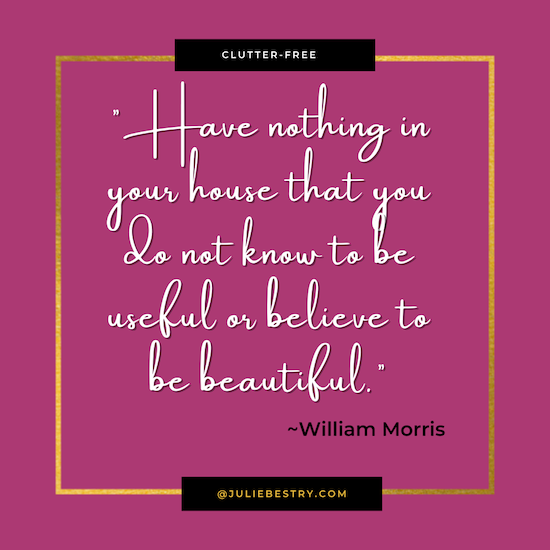
Not everything in your life is going to “spark joy.” Not a tax return, not a well-thumbed thesaurus, and in Paper Doll‘s case, not a lemon zester or a casserole dish. Utility, like beauty, is in the eye of the beholder. Only you know what you will find useful, but as a professional organizer, I can advise regarding what my clients find useful for reaching their organizing and productivity goals.
So, today we’re going to look at a sampling of gifts that are either useful or beautiful, or, when we’re lucky, both.
GIFTS OF GAMES TO REACH YOUR GOALS
Getting organized is obviously useful, but to people who aren’t professional organizers, it doesn’t always sound like fun. (Like, socks keep your feet warm, but unless you’re giving super-fun socks, like Bombas, the presents won’t always be received in a spirit of delight and joy.) But turning organizing into a game can make all the difference.
Duolingo and Language Learning Apps
On many Paper Doll posts, I’ve written about how I embrace Duolingo to learn Italian, and there’s research about the efficacy of the platform.
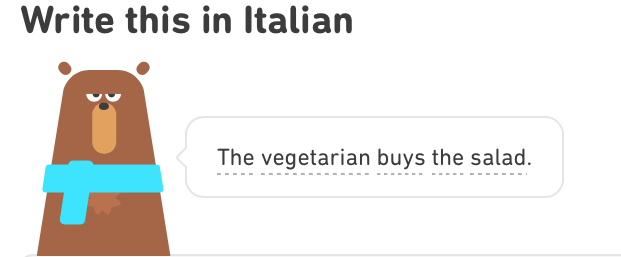
But it’s not the cute cartoons or the funny voices (or at least not only the cute cartoons and the funny voices) that help challenge me to meet my learning goals. Completing a lesson earns points. Completing practice earns points. Reaching the “legendary” level earns oodles of points.
There’s not a lot you can buy with the points (aside from a few lessons on idioms and flirting), but there are leagues and you can compete each week with other language learners to see who has earned the most points over the course of a week. (In theory, the points you earn represent diligence and knowledge gained.) While I don’t like to think of myself as competitive, per se, and don’t care if I land in the prize-winning top three of my weekly assigned league, I do like to see myself in the top half of the 25 people in my league by Sunday nights, right around when I’m writing to you readers.
You can study with Duolingo in your browser or on an mobile device in the app. Duolingo is free, but there’s an advertising-free Plus version you could buy as a gift for someone wanting a fun, gamified way to support their language learning.
(Other language-learning apps include Mango, Babbel, and Memrise. The Intrepid Guide also has a fun post, 26 Cool Gifts for Language Learners They Will Actually Use, and every item is either useful or beautiful, and many are both!)
Fitbit and Activity Trackers
I also use gamification to organize my fitness goals. Years ago, a friend gifted me with a Fitbit, which tracked my steps walked and stairs climbed. After the little device fell off in a parking lot without my realizing it, another friend gifted me an upgrade, wearable as a watch, and I can track my steps, exercise, quality of sleep (oy, vey), weight, calories, hydration, blood glucose, mindfulness, heart rate, and more.
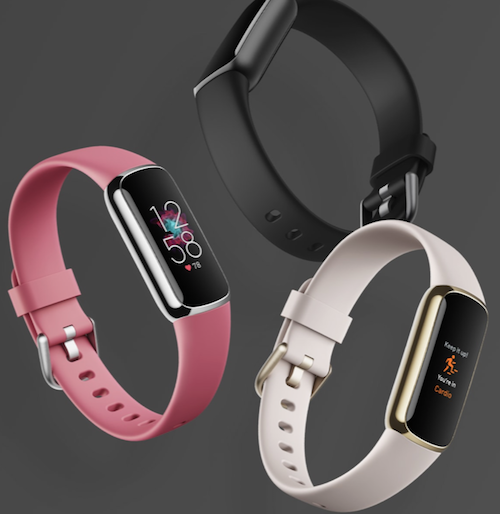
Most Fitbit (and similar brands of) trackers and watches are pretty techie-looking, but there are some (like in Fitbit’s Luxe line) that are both useful and beautiful.
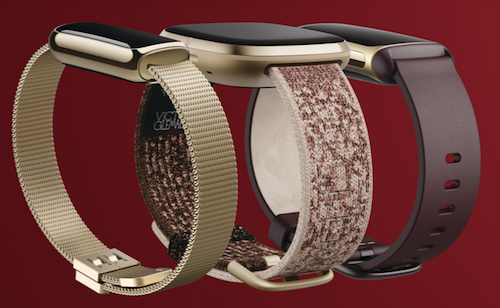
But what I like best? Each Monday, I start a “Workweek Hustle” with my best friend and her Gen-Z son. We can cheer (or lightheartedly taunt) one another, and write supportive messages. It’s social, but unlike social media, there are no photos or videos. We’re just gently encouraging one another to get moving.
You don’t have to take my word for it. My colleague Janine Adams and her podcasting partner Shannon Wilkinson, recently did an episode of their Getting to Good Enough podcast on the benefits and power of gamification. In fact, I was all set to mention a new organizing “game” when I saw that Janine and Shannon had already covered it!
DeclutterGo!™
Declutter Go!™ is a just-released cube-based organizing game from our colleague Lynne Poulton. Her new goodie uses concepts from brain science and gamification to encourage people to achieve their organizing goals together. Each set comes with six colorful, two-inch, foam cubes representing stages in the game.

You’ve seen me say it before: action precedes motivation. You have to conquer some kind of obstacle to kick activation energy into gear. (You can’t just wait until you’re motivated, but some strategies of gamification can motivate you to get started!) Declutter Go!™ breaks down larger projects into smaller tasks and gives you that dopamine hit when you accomplish something.
The goal is to conquer clutter and reward yourself for getting organized. You roll the pink die to prep yourself for the activity, then either the green or purple dice (depending on whether you’re going to take action on residential or paper organizing). Rolling the yellow, peach, or turquoise dice help you determine how many tasks, the area in which you’re going to work, and what your reward will be. You can “divide and conquer” tasks separately, or work as a team.
Read more about how it works and take a look:
Declutter Go!™ is $24.95 (with free shipping in the Continental US).
Of course, this is isn’t the only “useful” organizing game in town. You may recall another game from my post, Paper Doll Models the Spring 2021 Organizing Products.
Organize Your Home 10 Minutes at a Time Deck of Cards
Diane Quintana and Jonda Beattie‘s collaborative company, Release * Repurpose * Reorganize, developed the Organize Your Home 10 Minutes at a Time Deck of Cards. It’s a 52-card deck to guide you through organizing your home step-by-step, one 10-minute task at a time. (Again, gamification works best when it breaks down big projects into small tasks to give you that extra push.)
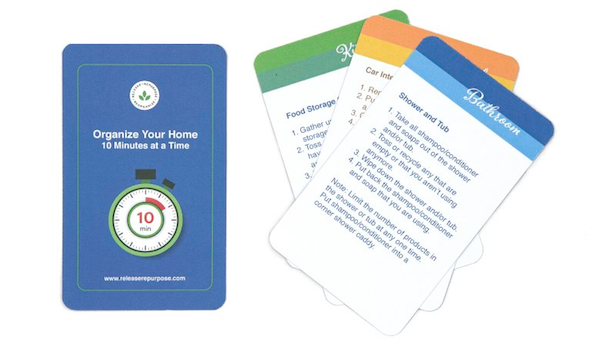
The deck includes two instruction cards to help you get started, plus 50 categorized task cards for coping with typical areas of a home, including kitchens, closets, bedrooms, bathrooms, family rooms, and similar spaces. The top of each card color-codes to the spaces covered, and tells you the space and task to be handled. The body of each card provides instructions for completing the task.
The Organize Your Home 10 Minutes at a Time Deck of Cards is available on their website or on Amazon for $19.95.
(Also, you should check out Jonda’s post, The 10 Most Useful Holiday Gifts for Disorganized People.)
Both of these organizing games are useful; I don’t know that you’d call Declutter Go!™ beautiful, but it sure is cute. And both it and Organize Your Home 10 Minutes at a Time Deck of Cards will help you make your space more beautiful.
ORGANIZING CLASSICS: KEEP YOUR BEAUTIFUL AND USEFUL THINGS FROM GETTING LOST
Over the years, I’ve written many posts about Bluetooth trackers and how you can keep your stuff from getting left behind (or walking away on its own in the guise of jam-handled toddlers or fetch-playing puppies), and the most popular brand always seems to come down to Tile.
Tile
Tile has lots of different styles, but there are some bargains to be had if you want your trackers to stand out and look as beautiful as the items they’re guarding. The Rich Ruby Red Slim and classic Azurite Blue are 30% off right now!
If you or someone on your gift list is a little less into primary colors and a little more into the Elle Woods look, the Rose Pink Tile Slims are 40% off currently.
The above designs are from last year, but if your recipient feel strongly about being au courant, the suuuuper-thin 2022 Tile Slim is designed to work with passports and notebooks as well, and the black ones are 20% off.
Of course, Tile isn’t the only game in town, and if you refer back to one of my posts from last year, Clutter-Free Holiday Gifts for the Weird Year of 2020 (Part 3): Organizing Yourself & Others, you’ll see links to many of the other Bluetooth trackers I’ve reviewed…not counting Apple’s AirTags.
Apple AirTags
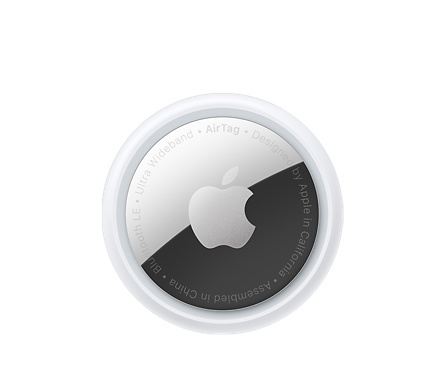
I haven’t had the opportunity to review these personally, but I can share the basics. As with other Bluetooth trackers, you attach your AirTag to your possessions; it sends out a secure Bluetooth signal detectible by any nearby devices in the Apple Find My network. (Find My iPhone. Find My iPad. Etc.)
The devices (off of which the signal pings) will send the location of your AirTag to iCloud — then you can go to the Find My app and see your AirTag-attached item on a map, and get a warmer/colder set of instructions as you head toward finding it. The entire process is both anonymous and encrypted, so your privacy is protected. Here’s a funny little video about how it works.
Apple’s AirTags are are $29.99 each, or $99 for a package of four. Obviously useful, the Air Tags themselves are kind of monochromatic — and thus, to most folks, not that beautiful.
However, even AirTags, which are accessories for your devices and essentials, have their own accessories to make them more beautiful! There are even Hermes AirTag accessories! (And, not surprisingly, these accessories are even more expensive than the AirTags themselves!) For what it’s worth, I’m partial to the Wisteria leather key ring.
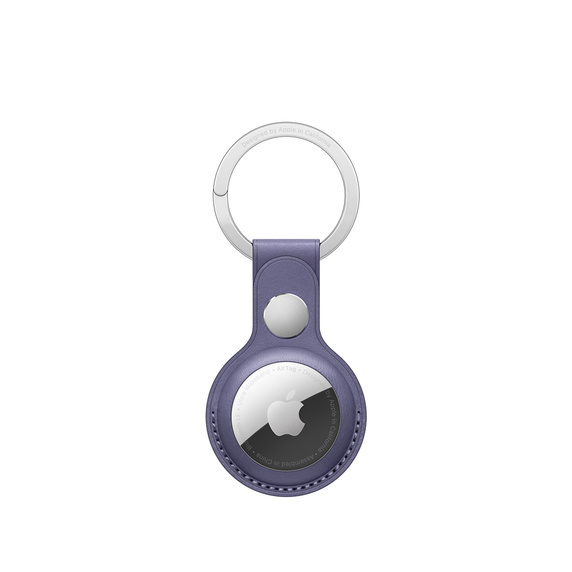
So, we’ve looked at what keeps you organized for your bulky stuff. But what about paper?
Tickler Files and Tickle Yourself Organized
Sure, there are all sorts of pretty ways to organize your paper, and that’s something Paper Doll covers all throughout the year. But longtime readers know that there’s nothing I recommend more often than tickler files, which I consider the most useful of paper organizing resources.
A tickler file is the best way to guarantee that all the pieces of paper that reflect tasks you have to perform, ideas you want to put into action, and information you want to convey…eventually…will await you until the day you need to access them. My favorite version is the Smead Desk File/Sorter Daily (1-31) and Monthly (Jan-Dec).
Paper Doll Interviews Life Coach, Author, and Kid-Schlepper Allison Task
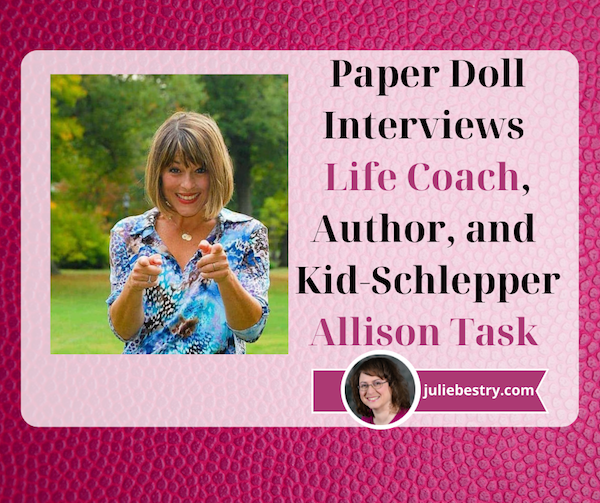
Paper Doll readers know it’s a rarity for me to do interview posts. I’ve saved this feature for special topics and colleagues, like Melissa Gratias, Leslie Josel, and that fun group of genealogy organizers, Janine Adams, Jennifer Lava, and Hazel Thornton.
Today, I want to introduce you to life coach Allison Task. You’ll hear how experiencing misogyny, learning psychology, the dot-com boom, culinary school, Martha Stewart, and de-prioritizing social media have helped her organize a life that allows her to support her clients, her readers, and her kids (who have a lot of their own adventures going on).
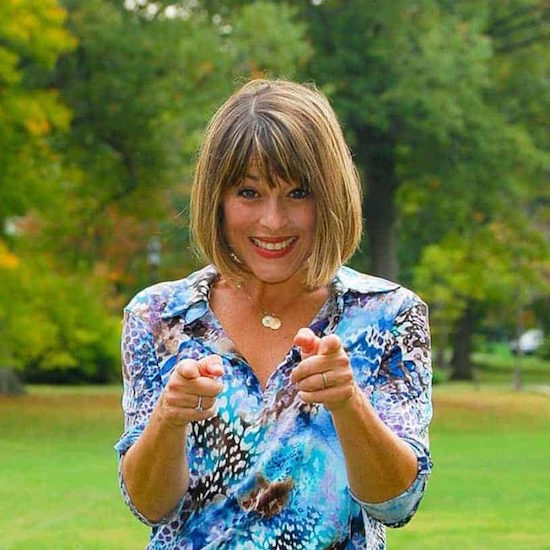
I’d like to say I knew a lot about Allison before she presented Let’s Make a Shidduch! How to Match Your Strengths to Client Needs and Do More of the Work You Love at NAPO2019 (especially as it turns out we went to the same college). But the shallow truth was, I picked her session because I was intrigued “shidduch” (Yiddish for “match,” as in matchmaking) and then was transfixed by the cool dress she wore during her presentation.
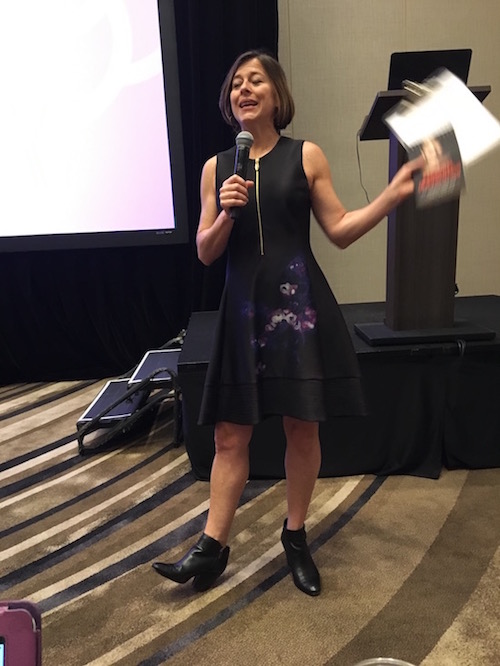
Had I known I’d be writing this post two and a half years later, I’d have been careful to take better photos! In my defense, Allison is such a high-energy presenter, there’s no way I could have caught her when she wasn’t in motion. So, I’m particularly excited that she was able to sit down for this fun interview about how she became the powerhouse life coach, speaker, and author she is today.
Allison, although we met at the NAPO Conference in Fort Worth, Texas, we *almost* could have met at college. I graduated from Cornell University in 1989, and you arrived just a little later, finishing in 1994. Mine was the decade of big hair and oversized sweaters; yours was the era of Beverly Hills, 90210 (the original!), babydoll dresses, and flannel shirts.
Could you tell Paper Doll readers about your early life and college years (when you majored in Human Development and Family Studies at Cornell, and later got a Masters in Science in Food and Nutrition from New York University)? What did you plan to do when you finished school?
But really, which one of us was Gear bags? Neon pinstripe jeans? NafNaf and ID#? I mean, Aqua Net belongs to the ages, but I am going to claim Sir Mix-A-Lots “I Like Big BUTTS” refrain as central to my college experience. Sigh. I just know I wore a lot of unitards and boot cut jeans under that flannel…
[Editor’s Note: As much as I love to link to pop culture videos, readers are just going to have to click through if they want to sing and dance along to Baby Got Back. It’s still a little spicy for an organizing blog!]
I think one thing that was key to college, or at least my interests during that time, was that I wanted to help people. And I was obsessed with how we think, why we think, and how we make the choices we make. Growing up as a girl on Long Island in the 80s, my experience was that we were coached to be lemmings — go to the mall, get your face on, and attract a male.
I really felt like my experience as a smart girl in the 80s was [being told] to tone it down, diminish the smarts so you didn’t alienate the boys. Your value is the boy you attract. I repeat, your value is the boy you attract. So I read the magazines and did the things to be, well…visions of Cherry Pie and Aerosmith videos. I think of the 80s hypersexualized women and girls, and those were the messages I received about women’s and girls’ worth.
At college, there was a refrain that we were the “ugliest girls in the Ivies.” [Editor’s note: Not Allison or I, personally. Just to be clear. We were stunning!]
And we heard that “smart girls are, obviously, dogs.” I remember the word dogs being used instead of women. So, I have a bit of baggage. When Supreme Court Justice Brett Kavanaugh’s hearings were going on, I watched every one. My phone line was lit up with friends at Yale who went there when he did. Those stories about high school parties and bad behavior led to similar in college. Similar but worse. And my college experience was full of experiences like those that Dr. Christine Blasey Ford revealed. Both experientially, and watching very drunk girls get carried away into rooms for terrible abuse. I saw and experienced things I wish I didn’t, and got both campus police and [the campus newspaper] involved. Let’s just say the male authorities didn’t want to touch any of that stuff.
It’s a different time today and I’m grateful for it. But it’s hard not to remember college without those experiences pushing to the fore.
I went to school because I wanted to learn more about people and how they think. Thus, Human Development. As I saw it, after I received my degree, I could go into marketing or social work. Since social work required more schooling, and seemed a bit grim and underpaid from the stories I heard from HDFS grads, I pursued marketing.
And media. In fact, my first job after college was a paid internship with WNET (Channel 13) in NYC. I was to research a documentary about celebrating the differences between the sexes. Gosh, flash forward to years later and this would be a totally different subject!
On Day 1, the funding fell through and I was researching a documentary on Hoboken. After the award-winning producer brought me to his apartment in Hoboken a few times and made me feel horribly uncomfortable (Picking up on a theme here? I hope so!), I quit and waitressed at my local pasta joint. What a summer!
Yikes! So what then?
Then I got a job as a CD-ROM CEO’s secretary, and had the job of researching how they could build a web site.
This is how my career launched. A year later, I was working at an Internet startup, and a year after that was recruited by CNET in San Francisco to join their team. A year after that, I was working for another startup and my starting salary was more than my mother’s final salary before she retired as a principal. I share that to let you know what a head trip this all was — I was three years out of school with a Human Development degree making more than my mother did as a principal in the highest paying district in New York state. Bananas!
I worked at dot coms for the better part of 10 years. I had a front row seat to the internet revolution in the nineties and aughts and it was a blast. I had the most exhilarating conversations about what we can build, and work and life happily blurred. The conversations I had about possibility, and what might happen (“Imagine, some day we will do holiday shopping online! Really, we will!”), dodging the naysayers, believing and building — all set the groundwork for the kind of creatively inspired conversations I have with my clients every day as a coach.
I eventually left dot coms and went to culinary school. After ten years of digital, moving from NY to SF and back again, I was ready for something more tangible and tactile. It’s no mistake that the maker movement has come in concert with the rise of digitalization — they are yin and yang, and I needed more yang.
Also, the B-school folk rushed into the dot-com world and made it all about bottom lines. There was more than enough money for everyone, but the obsessive focus on “exploiting the market” turned me off and felt grotesque. When we moved from the creative question of “what can we build” to “how much money can we make” I got bored and went to share my talents elsewhere.
(The Food Science Masters at NYU happened in my late 30s and was more for fun than a direct part of my career path.)
OK, so basically, you did the dot.com thing until late-stage capitalism turned the joy of creation into something unpalatable, then went to culinary school where everything was (hopefully) palatable! And (like me, before I was Paper Doll) you spent time in the television industry. The word is that you even worked with THE Martha Stewart!
All true! When I went to culinary school, I had a specific goal: I wanted to help people learn to cook at home. We grew up with the first generation of working moms and microwave dinner. I wanted to return the skill of home cooking to full time workers, and make it fun and easy. But not microwave easy, 20-30 minute puttanesca easy. I had put on some weight eating out all the time when I was dot-comming, but more importantly, I couldn’t hard boil an egg. I wanted to learn and I wanted to teach.
And the best home cooking teacher at the time, or at least the most visible, was Martha Stewart. And I needed to work for her. So I pursued and pursued until I had the opportunity. I was part of the launch team for Everyday Food, and eventually ended up as a culinary producer for her TV show.
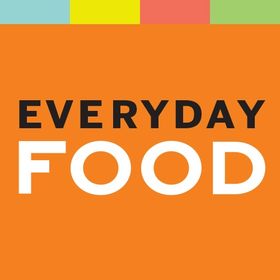
I learned more there than I had hoped — and was able to work directly with Martha. Presenting a TV segment to her is like defending a thesis. You have to think through everything. It raised my standards in the highest possible way.
While there, Martha was under investigation (and I left when she was sentenced to prison). As a result, the company was looking for talent inside the organization. I was asked to audition for a TV show, and ended up testing really well. (I was told I got very high “Q” ratings.) [Editor’s Note: Q scores measure familiarity and appeal of personalities and brands.)
So they media-trained me and gave me an opportunity to be part of the Everyday Food TV show on…PBS! Channel 13! Ah the irony of returning to that place of abuse as TALENT!
That was my first TV opportunity and it was a blast. Pure fun. After that I had opportunities to host shows on TLC, Lifetime, and Yahoo. An early producer gave me the advice, “Don’t count on this as a career, just have fun with it as long as you can.” I did and it was a blast.
How did these experiences prepare you for a career as a life coach, speaker, and published author? (And anything you want to say about Martha?)
Martha is great. She is endlessly curious and pursues those curiosities with vigor. I admire her tremendously.
I had twists and turns in my career. I knew what I wanted to do — help people, understand why they do what they do, and help them do the things they want / that benefit them. As a dot-com marketer, I helped explain what the internet could be. I helped people open their minds to the possibility of creating businesses online. It’s a leap of faith to show people the future, and to help them dream in this new environment.
That’s exactly what I do as a coach!
I get it! That’s what we do as professional organizers!
When the dot com became too exploitative or materialistic, I was turned off and looked for different work.
Working on TV helped me understand mechanics of communication — how I could interact with people to produce an emotion, and how sometimes helping people have a good cry could be beneficial to them. I learned how to connect with guests on my shows to set them at ease (while cameras were rolling), and build trust. These are absolutely skills I use with clients today (without cameras).
I trained as an early dot-commer to imagine the possible, and I trained as an on-camera host to build relationships with guests on the show and with my audience.
Working as an author I tried to share my personality / point of view to entertain and educate.
I was never very good at or interested in social media and all the self promotion (or all the hours of liking and engagement that it requires). I sidelined myself from media work when that all got big, in part because I had three kids in a little less than 1-1/2 years and I wanted to put my focus on them, not Facebook or Instagram.
This hurt me, I’m sure, in terms of my public image, but I’m quite happy about the connection I have with my kids and our light media engagement. I made the better choice personally, and it’s part of why my public image is rather quiet.
What would you say was the turning point that helped you identify your true calling and fine-tune what you do professionally?
So many moments! Here are three key ones:
- When I became a paper millionaire at my dot com at 26, I decided that was enough money to not have to work again. I wanted to live light, and I could live off the investment (not touching the principal). This opened the question of what work I would do if I didn’t have to work, which led me to helping people, helping their physical health, which led to cooking.
- Getting that Q rating at Martha developed my confidence that “people liked me, they really liked me,” and if I was true to my personality, that could resonate in the market place. I didn’t have to Aqua-Net my way into the favor of the public, I just had to reveal who I actually was. That was the special sauce!
- I was on the back of my boyfriend’s Triumph, tooling around NYC, and stopped near NYU to get some noodles. I picked up a copy of the NYU Steinhardt course catalog and saw the program for coaching. Lightning bolt moment — I could help people raise their game, work better than they are currently doing, enjoy life more. Sign. Me. The. Hell. Up! It was so clear that I had to do this, like the tide lifted me and I had to do it.
What do you love about the coaching experience? What are some things that have surprised you about coaching?
I love my clients. I love their bravery and courage to ask for more in their lives. I love our relationship, how we create a sense of trust and how I help them do what they know they want to do! I like supporting others to their own personal greatness.
I do get sad, sometimes, at the distance that is created culturally that we get so far from our own voice, that we stop listening to ourselves. I love the repair that can happen inside a person — that they can start to believe in and trust themselves again.
I love listening to another person really deeply so that they can better listen to themselves.
I like laughing and having fun with a client. There’s a big range of emotions — fear, sadness, hope, pain, joy…it’s powerful.
Writing is obviously a passion for you. Even before you were a coach, you made a name for yourself in writing cookbooks. There’s You Can Trust a Skinny Cook (as Allison Fishman) and Cooking Light’s Lighten Up, America!: Favorite American Foods Made Guilt-Free (under your full name, Allison Fishman Task).
Paper Doll Introduces 5 New and Noteworthy Books By Professional Organizers
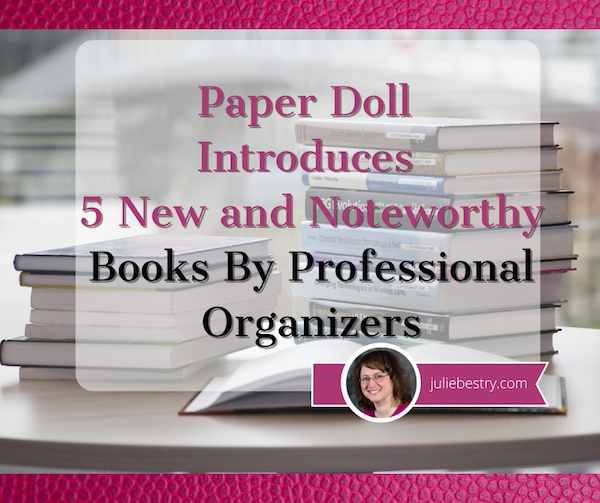
When we think of books about organizing (and books by professional organizers), there’s a tendency to focus on the how-toaspect. “Have these problems? Follow these steps.” Done-and-dusted, as my favorite BBC shows would say. There are many, many books like that, identifying the problem and offering turnkey solutions.
None of the books I’m sharing with you today follow that kind of recipe-for-success strategy. They’re deeper, wiser, and recognize the complexities of life that prevent us from robotically following a set of numbered tasks to get from chaos to serenity. Not all of the books I’m going to share with you today will appeal to every reader, but all are written by colleagues whom I respect and admire.
Professional organizers have opinions. LOTS of opinions. And they’re generally backed by years of expertise, continuing education, and research. The authors I’m sharing with you today have dug deeply into the vast quagmires of our human brains (and of society, itself) to understand the intricacies that got us where we are, the challenges we (individually and collectively) face, and the strategies for moving forward.
NON-FICTION
Emotional Labor: Why A Woman’s Work Is Never Done by Dr. Regina F. Lark, Ph.D, CPO® and Judith Kolberg
20+ Sites to Organize Your Holiday Dining, Shopping & More

Most of the time, when we talk about being organized and productive, we’re discussing reducing the non-essentials — whether those are duplicate or no-longer-necessary items, tasks that don’t fit our values or our goals, or habits that don’t get us where we want to end up.
But sometimes, and at the risk of seeming very much like that “You Won’t Believe How Much Time You’ll Save With These Organizing Secrets” clickbait, all we need is a little edge to make something a teeny bit easier. So, today’s post serves up a Thanksgiving smörgåsbord of web sites and apps to help you accomplish making your holiday life run more smoothly, whether you’re headed over the river and through the woods or staying put while everyone takes the I-90 or the red-eye to get to you.
And even if you’re planning to stay safely snuggled, avoiding the Thanksgiving hubbub again this year for safety, consider bookmarking these tips for future holiday seasons.
NIFTY SITES TO SAVE YOU FROM COOKING CONUNDRUMS

Still Tasty — Before you get started on holiday cooking, you’re going to need to take stock of your kitchen and check your pantry inventory against the recipes you plan to use. Sometimes you have an ingredient, but you’re just not quite sure whether it is up to snuff. Is it going to make your dessert dazzling or require a trip to the emergency room?
I don’t cook, but people who do always tell me that if an herb or spice has no scent anymore, it’s not going to deliver much to your meal. That makes sense. And obviously, anything that comes with an expiration date (as opposed to a more vague “best if used by” date) should be sent on its way. But what about everything else?
For example, I was recently on a web site where the community gives a lot of great advice, and someone posted, “I just realized I forgot to put the soy sauce back in the fridge last night. Do I have to throw it out.” Readers, I was gobsmacked. In all my <mumble mumble> years, I’ve never refrigerated soy sauce! So that sent me running to Still Tasty to find out if I’d been risking self-poisoning with every take-out sushi or Kung Pao dinner! (It turns out, I was okeydokey.)
To keep from wasting money by throwing out ingredients are still good (and maintaining the health of your family and friends), visit Still Tasty to figure out whether you should keep or toss an ingredient, ask questions about storage and expiration dates, and get the low-down on how to deal with food during or after a power outage. There are even tips on which foods you can bring through airport security (in case you’re sending folks home with leftovers) — and lots (and lots) of posts about turkey. Speaking of which…
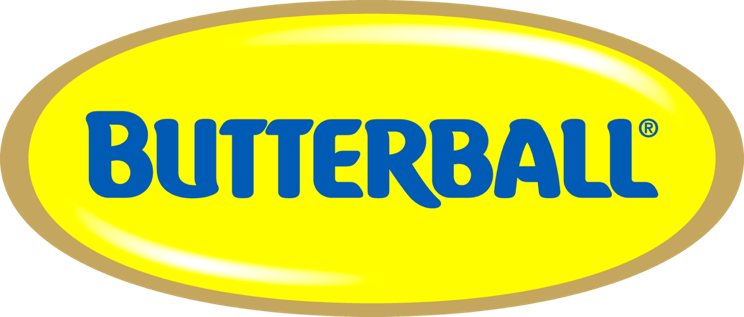
Butterbull Turkey Talk Hotline — This year marks the 40th anniversary of the hotline at which more than fifty professionally trained turkey experts answer turkey-related questions (in English and Spanish) every holiday season, responding to 100,000+ questions for many thousands of North American households. Thaw, brine, stuff, roast, spatchcock, deep fry, grill, or carve, if you’ve got a Q, they’ve got a gobble-gobble A.
And it’s not just a phone hotline anymore. You can get answers to your turkey queries via multiple methods, including:
- Telephone — at 1-800-BUTTERBALL (1-800-288-8372)
- Text — at 844-877-3456
- Email or online chat via their contact page
- Amazon Alexa (but sadly, not Siri) — visit this page and scroll down to learn how
- And if you don’t mind other people knowing what your question is, you can ask via Facebook, Instagram, and TikTok! (Now I want a mash-up of Butterball questions and sea shanties!)
And because you know Paper Doll is all about pop culture references, I dare you to watch this classic Butterball-related clip from The West Wing and not giggle.
All these years, and I’m still not sure this wasn’t a PSA to make sure none of NBC’s viewers got salmonella.

Punchfork — Maybe your family cooks all of the same favorites year after year after year and that’s fine by you. But perhaps this is your first holiday season on your own, cooking Friendsgiving. Or maybe you and your sweetie-pie want to create new traditions that don’t include pecan pie. Sure, you could troll all the cookbooks and cooking blogs.
Or you could visit Punchfork. They gather the newest recipes from top-rated food sites and blogs and display them Pinterest-style so you can look at the mouth-watering photos and browse, seeing the finished product, the blog/site name, the community rating (based on how often it has been shared on social media), and how recently the recipe was posted.
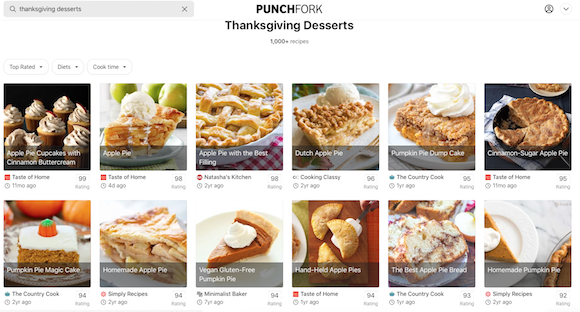
Sign up for free, and they start you off with a Favorites dashboard to which you can add recipes by clicking (again, Pinterest-style). Punchfork is available via your browser or as an iOS app.
The site is updated daily, and you can browse by ingredient name or use their natural-language search engine to find whatever you’re craving. I started researching this post late at night while craving chocolate, and was delighted to find twenty different recipes for Nanaimo bars!
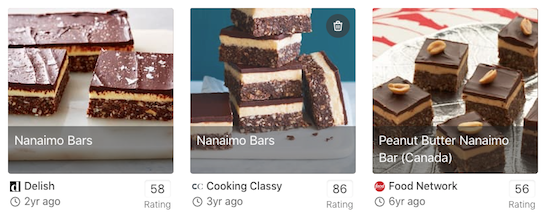
If someone’s following a particular diet (vegetarian, vegan, paleo, gluten-free, etc.), there’s a search option. You can even search by excluded ingredients, in case someone has an allergy, sensitivity, or ick factor. (For example, Paper Doll hates cauliflower and gravy.)
And once the holidays are over and you’ve hoovered up every remaining leftover, you can just randomly type the ingredients you do still have available, and it’ll find you a recipe that will work.
Next, we have a little controversy.

Just the Recipe — With Just the Recipe, you can copy and paste any URL from anywhere on the web and it’ll give you (you guessed it) just the recipe. Not the blogger’s tale of the recipe’s history, not a request to join an email list, no ads, and no pop-ups. Just the recipe (including ingredients). You don’t even have to go to the website; you can just right-click (or control-click on a Mac) to copy a link directly from Google. (Hence the controversy, as you’ll see.)
Let’s say I want the Love and Lemons blog’s “Best Stuffing Recipe.” Let’s also say I’m in a super rush and can’t be bothered to scroll down the page to read the text and look at the photos that come before the recipe. I can paste it into Just the Recipe and it will spit out a clean, organized, ready-to-print page with just the ingredient list, the instructions, a small photo of the finished result, and a link back to the original. (This last part is important.)
Just the Recipe is a free browser-based site, though they’d like you to consider a $2/month premium version (for which there’s a 14-day free trial).
So why is this controversial? Apparently, there are a lot of people are out there who feel strongly that they don’t want to read carefully crafted food writing. They don’t care about the blogger’s grandmother, who carried the secret family recipe for borscht, scribbled in her own mother’s writing and tucked into her bosom as she escaped the old country. They just want ingredients, measurements, and steps.
I’m not fussing about the people who don’t care and scroll past the lovely stories. I get it. We’re all in a hurry these days. I’m talking about the people who are ANGRY AND VOCAL that food bloggers are writing anything but the actual recipes. (How vocal? Type “I just want the recipe” into a search engine and you get lots of profanity-laden posts, articles, web sites and app,s filled with anger about having to be subjected to non-recipe paragraphs. I imagine these people snapping impatiently at Grandma when she tells a story, shouting, “Get to the point!”)
The thing is, bloggers take time and effort to craft their blogs. (I know I do.) Some of these bloggers (including food bloggers) want to recoup the cost of ingredients for testing recipes, hosting sites, and tech support, and so they run advertising on their sites. (I don’t, but I still respect bloggers who do.)
And this content, whether it’s an essay about the blogger’s family or the history of the recipe or explanations of different ethnicities’ approaches to similar types of food, all serve to improve what’s called search engine optimization. It’s the thing that makes Google tell you about that recipe on the first search page and not the 57th. It’s brings people to a page.
So, it’s understandably controversial that there are sites (like Just the Recipe, Copy Me That, and others) that take this lovingly created content and strip everything that is a) meaningful to the creator and b) gives them a chance to generate money and especially c) gives other sites a chance to make money off the originator’s content.
My opinion? Not cool, dude. And I’m not the only one.
If you’re annoyed by scrolling to get to the recipe on personal food blogs you can:
– use cookbooks
– use one of the many, many recipe websites that don’t preface their recipes with stories
– just deal with 3 seconds of annoyance for your free recipe and move on with your life— Helen Rosner (@hels) February 17, 2020
Last spring, I learned about the hubbub from an article in Eater called, This Is What Happens When Tech Bros Attempt to ‘Fix’ Online Recipes. (Short answer, the Recipeasly shut down within weeks of being announced because they also realized what they were doing wasn’t cool.)
So, I encourage you to at least respect food bloggers enough to actually go to their pages. If you don’t want to click on the ads, I feel you. If you don’t want to read the content — and are willing to risk missing cautionary tales about food prep pitfalls, as well as narrative flavor — you do you, boo! But respect the bloggers enough to go to their pages, give their sites the “hits” for their posts, and maybe don’t complain.
(Don’t worry, I know none of Paper Doll‘s loyal readers would ever be such meanies. This is for those future readers who land here from a search about only wanting recipes.)
I was hoping to find you a website that provided timers and assistance for getting all of your Thanksgiving (or other holiday meals) cooked and ready at the same time. I was certain I’d find a link that would help you figure out how to enter the prep and cooking time for each menu item and then get step-by-step instructions for what to do when.
If there is such an app, I didn’t find it. If there isn’t, and you know a good programmer, consider this idea my gift to you. I did find the following articles, though:
How to Cook Thanksgiving With (Gasp!) One Oven
When You Should Start Cooking Every Dish For Thanksgiving
Here’s Exactly When To Cook Every Dish For Thanksgiving Dinner
And remember, your cell phone will let you set oodles of timers. Set one for every single item you put in the oven and label each timer (it just takes a second) with which food and what you’re supposed to be doing, whether that’s taking it out of the oven or flipping it over, or adding a glaze.
Omnicalculator does have a bunch of online calculators to make your cooking experience easier and more organized, from a Thanksgiving calculator that tells you how much (in pounds or pieces or gallons) of holiday food/beverages you’ll need to a turkey defrosting time calculator and so much more.
SITES TO EASE YOUR HOLIDAY SHOPPING EXPERIENCE
Obviously, as a professional organizer, I want to discourage you from shopping willynilly for things neither you nor your recipients need. I urge you to stay home on Black Friday (to stay safe — we are still in a pandemic, after all) and if you must shop, do it with a list and whenever possible, online.
There are several extensions you can add to your browsers to notify you if a retailer’s site you visit has a discount available.
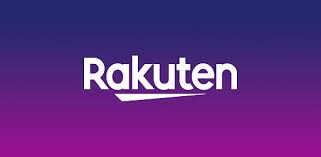
My favorite is Rakuten, formerly Ebates (and formerly easier to pronounce). You can go directly to their site and then click through a retailer’s links. Doing so will give you a cookie (though not the kind with chocolate chips), and not only will you get a discount, but you’ll earn cash back. But even easier is to just add the little extension to your browser, and it’ll do all the work for you.
Similar sites include Capital One Shopping (formerly WikiBuy) and Honey.

Another site I use often is Retail Me Not. Let’s say you’re shopping at Kohl’s. (OK, let’s say I am, because it’s the only non-grocery, non-Amazon place I’ve shopped for the last 18 months.) Type the name of the retailer into the search box and you’ll see a wide variety of discount codes for different types of purchases at any given retailer. (I’ve found discounts for my web site’s domain registrar, restaurants, clothing stores, and sometimes even Amazon.)

CamelCamelCamel.com — Speaking of Amazon (and I know that between Black Friday and Cyber Monday, many of you will be), this dromedary-themed site is a free Amazon price tracker. Type in keywords for a product you want, or paste the Amazon URL for something you’re thinking about buying. (There’s also a Camelizer browser extension.)
Last week, my friend bought an iRobot 240 Braava Rob Mop, a mopping cousin of a Roomba.
Unpacking: Paper Doll Explores a Video Game About Organizing
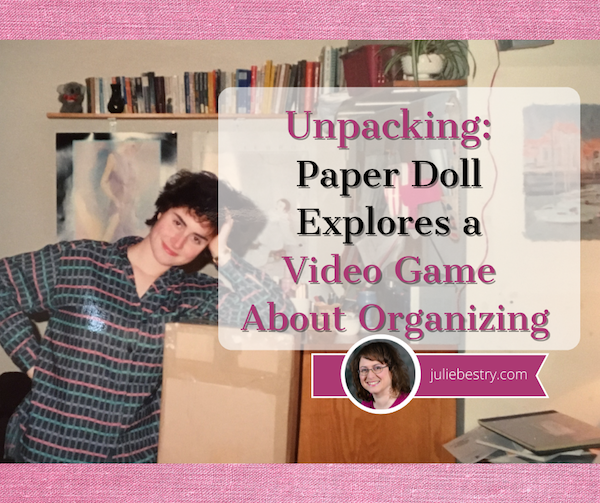
[Editor’s Note: This is not a typical Paper Doll post, but it is about organizing, so don’t worry that I’ve changed the focus of the blog. Also, if you click on any of the links in the first few paragraphs and get distracted playing classic games in your browser, don’t forget to come back and read the rest of the post!]
UNPACKING

I have limited experience with video games. Which is to say, I played the tennis-like Pong at a friend’s house when it first came out around 1972 and delighted in PacMan (and Ms. Pacman) while waiting for my Pizza Hut meal to be served, during my adolescent years.
And I even plunked myself down to play Super Mario Bros. when I was in graduate school and needed something obsessive and concentration-focusing to take my mind off what the heck I was going to do with my life when graduate school was over.
But game strategy, manual dexterity, competitiveness, and the ability to bonk a cartoon plumber’s head upward onto a brick to make a mushroom appear (if I’m recalling correctly) — none of these have ever been my strong suits.
In the past three decades, my interaction with video games has been limited to helping my clients pare down their video game collections, organize what they keep, and sell or donate the remainder. I haven’t played, or had any desire to play, any games until last week, when Australian game developer Witch Beam released Unpacking. My Google News feed knows me too well, and upon last week’s release, I was inundated with articles and reviews about this intriguing game.
The company describes Unpacking as a “Zen puzzle about unpacking a life.”
The game has eight chapters or levels, each corresponding to a move to a new “home” — a childhood room, a college dorm, one’s own apartment, sharing a space with a significant other, etc. — all for an unnamed, unknown protagonist. It starts in 1997 and continues forward to today. As players, we are never explicitly told the story of this character, but through her possessions, a certain intimate bond is formed.
The game has been described as “part item Tetris, part home decoration.” You select digital cardboard boxes, open them, and through the game, put the items away. There are pre-ordained slots or shelves; the game is designed as a puzzle, and the goal isn’t to throw everything higgledy-piggledy but find the logical home.
To move to the next level, you need to generally put things where a reasonable person might think they should go. That said, as part of the accessibility features of the game, you can apply the “allow items anywhere” option to eliminate the puzzle element. With this choice, you can’t really put an item in the “wrong” place any more than you could in your own home. (Still, please don’t store extra pantry items or clothes in the bathtub; we professional organizers have seen that in the real world, and it’s just not a great option.)
So, just like at your house, you can put things in weird places. And while I haven’t seen a treadmill or Peleton in the game, I’m betting that just like in real life, you can hang your clothes on exercise equipment. As a player, you get to decide where things belong, but you have to obey the laws of physics and geometry. You can’t fit square pegs in round holes or ten pounds of whatever into a five-pound bag.
I find it appealing that there’s no competition and no timers counting down. But there are, apparently, 14,000 different audio sounds to go along with tucking items in nooks and crannies, setting a toothbrush in a water glass, arranging books on shelves and supplies in drawers, and so on. If you lift a T-shirt to a hanger placed on a rod, the shirt hangs; move it lower to a stack of shirts, and it self-folds. (If only actual unpacking, organizing, and indeed, laundry day, were so magical.)
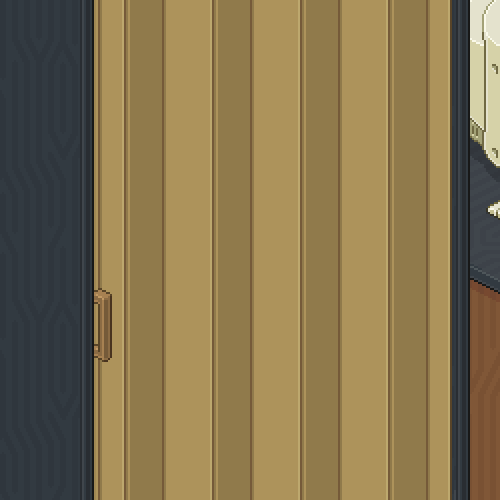
In addition to putting things away (that is, giving them homes), you can change the color signature of the room, add some on-screen stickers to decorate, take photos of a completed room, and add those photos to a scrapbook, complete with a “handwritten” description of your move-in experience.
Here’s a peek at the game’s launch trailer:
Throughout it all, there’s a soundtrack from a BAFTA (British Academy of Film and Television Arts) award-winning composer, Jeff van Dyck. If video game soundtracks are your thing (Yes, I’m looking at you, my friend Chris!), you can listen to Unpacking’s soundtrack on Spotify and purchase it in all the usual music-buying places like Amazon, Apple Music, Bandcamp, etc. (And no, Chris, I’m not listening to this in the car on any road trips.)
Warning: I should also note that, assuming you’re reading in North America, there will be some oddities in the rooms and homes in Unpacking. The refrigerators are not the full-sized ones we have, but those smaller, under-counter ones that are barely bigger than dorm fridges. The bathtubs have the glass half-walls I saw in Europe; I’ve yet to figure out how one manages not to soak the half the bathroom, but at least there’s no need to run any water in the actual game.
I’ve seen reviews calling the game calming and endearing, but also cathartic and moving. (Of which, I have more thoughts, below.) As a professional organizer, of course, I found this tweet hopeful:
Y’all, I already knew @UnpackingALife is a great game, but my daughter is cleaning her room and I was impressed with how much better it looks than normal.
She told me “Unpacking really helped.” Holy crap ? Best game ever!!!! pic.twitter.com/WQNhT3fHd7
— Dr. Ashley Godbold ????? (@ashleygodbold) November 6, 2021
And for those who wonder how much detail is available to organize exactly how and where you want things to be, this tweet gives you a sign:
We definitely didn’t expect this kind of creativity from our replay feature, but we love it so much! ??
Credits: @carellogyhttps://t.co/wZe1SQpICc pic.twitter.com/115WshTfLj
— Unpacking ? Out NOW! (@UnpackingALife) November 7, 2021
Unpacking is available for a variety of platforms, including Windows, Mac, Linux, Nintendo Switch, and Xbox One and runs $19.99.
ACCESSIBILITY
In the real world, unpacking and organizing a new home, whether a dorm room, a studio apartment, or a multi-bedroom family house, can be a massive headache. Imagine how much more difficult is must be for those with physical disabilities or distracting cognitive challenges (ranging from ADHD to traumatic brain injury). This is just one reason why many clients call in NAPO or NASMM professional organizers who specialize in relocations to work some video game-like magic in setting up a new space.
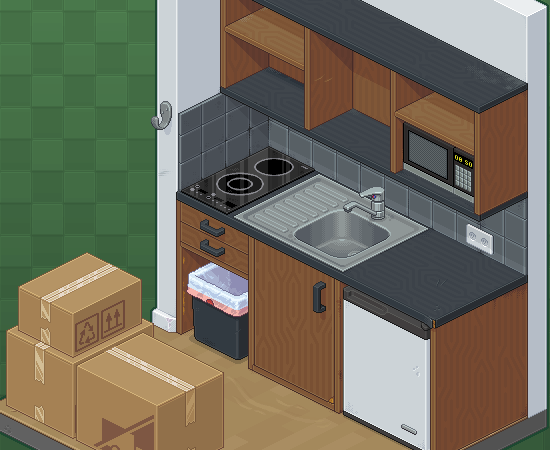
I can’t be the only person who gets flashbacks to Bewitched watching this sped-up kitchen unpacking/organizing scene play out. Seriously, compare it to Samantha Stevens working her tinka-tinka-tink:
There are no in-game professional organizers, but Unpacking‘s developers prides themselves on its accessibility features.
For those needing visual assistance, the user interface buttons can be enlarged, and you can zoom in on the screen; if you’ve made a booboo, the red “invalid” outline (remember what I said about the laws of physics?) can be changed to a different color. And you can disable the animation feature for room-swapping (in case you unpack a box of kitchen items when you’re in the living room) to avoid motion sickness.
In terms of audio assistance, the game lets you operate soundtrack music and sound effect volumes separately, and there are no audio-exclusive cues for game play, so players who can’t hear don’t miss any of the essential game features.
For cognitive accessibility, the game has no penalties; there’s minimal text, and reading skills (in English or otherwise) are not required in order to play. And, as mentioned, you can turn off the puzzle angle to be allowed to put things anywhere.
There are also a variety of mobility-related accessibility features. None of the actions require pressing more than one button at a time, clicking-and-dragging, holding down buttons. Computer versions support playing via a mouse and keyboard, a game pad, or touch (“on supported hardware,” they note) and you can play one-handed with just a mouse. The Nintendo Switch version of the game supports (and I quote, because I have no idea what this means), “gamepad, touch, and gyro in two-handed and one-handed configurations.” Controls are re-mappable when necessary to support a user’s accessibility needs.
While Paper Doll is neither a gamer nor a reviewer, I think it’s important to accent accessibility features in products, and while this does not arise often when I talk about notebooks and storage options, I intend to be more cognizant of such issues in future posts.
UNPACKING THOUGHTS ABOUT UNPACKING
Having missed three decades of video game development, I am, at best, only peripherally aware that not all games are multi-player shoot-em-ups and car-racing (and crashing) extravaganzas. Certainly I knew about The Sims, a series of simulation games where players create virtual people, build them homes (and families) and play with their careers, activities, and moods and desires.
Apparently, this approach is called a sandbox game, an open-ended type of video game where players have a freedom of movement for their creations and there are no pre-set goals. (If only we humans felt that much ease in creating our lives and risking change!) The popular Minecraft, with it’s blocky 3D people and infinitely expanding world of raw materials, tools, and create-able structures is similar.
Unpacking feels like it belongs in a world tangential to these sandbox games; there’s freedom of movement, no timers or competition, and you can’t lose your character’s life by unpacking things in the wrong order or organizing things “wrong.” But like real life, there is a very solid goal for you as the in-world character: unpack in an organized way to live your life.
In Vice‘s Unpacking Is a Lovely Game About the Power of Seemingly Mundane Objects, Moises Taveras has created a great introduction to the game beyond the broad strokes. Through it I learned some spoilers and realized that there was more depth of insight to be had beyond how many frying pans could be fit into a cabinet:
The “challenge,” a term I’ll throw around incredibly loosely, becomes finding where everything fits best. It’s a logic puzzle, so as long as you’ve been in a kitchen, a bedroom or bathroom, you’ll be able to sufficiently reproduce a functional home. … There’s a joy in getting it all right, but the greater one to me was playing a game that, in bits and pieces, understood the relationship we build with the things we collect.
But there’s more. After I learned of Unpacking, I started reading every review I could find, and what’s particularly gripping about the game is how you get to see the protagonist’s life unfold through her possessions (and those with whom she shares her space). It reminded me of Sam Gosling‘s book, Snoop: What Your Stuff Says About You.

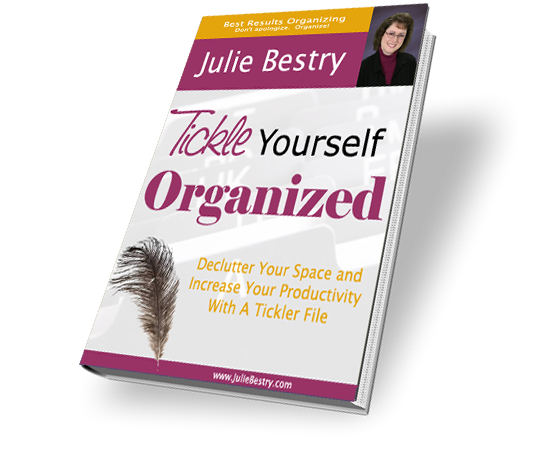
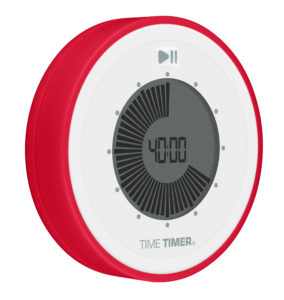
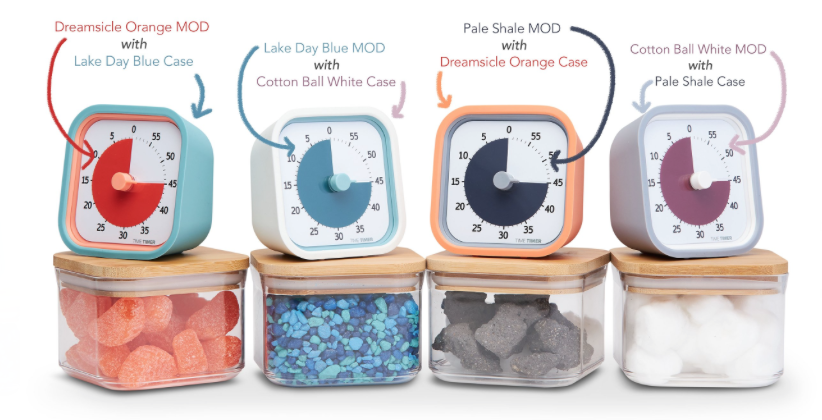
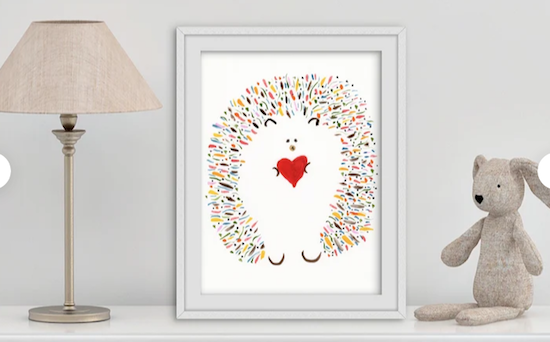
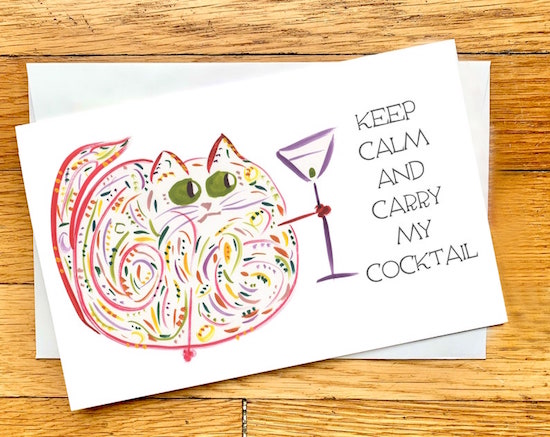




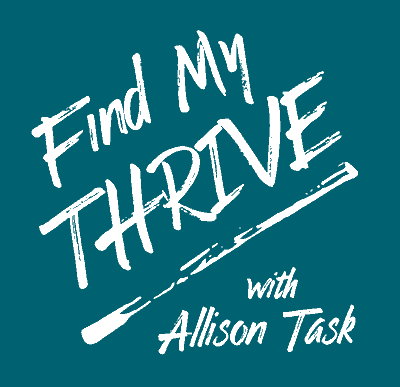


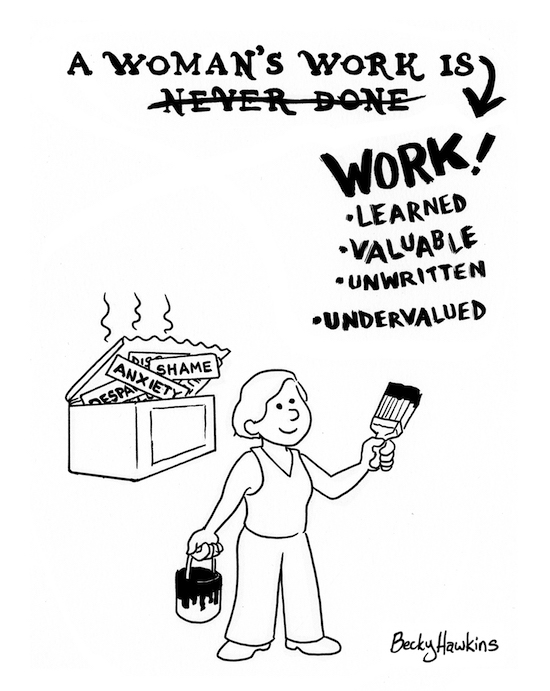





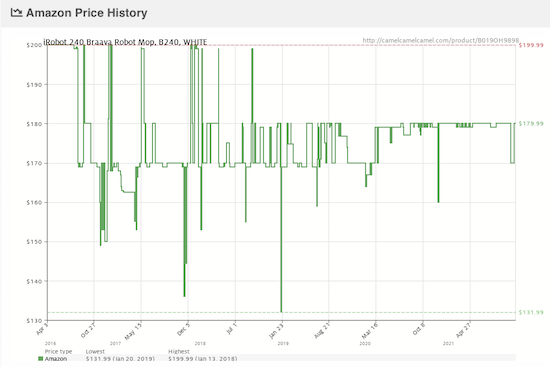



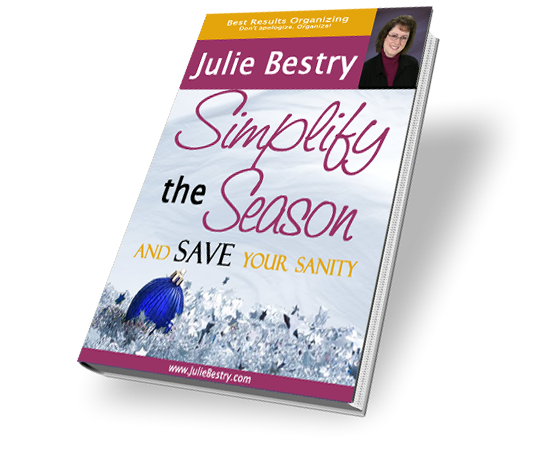

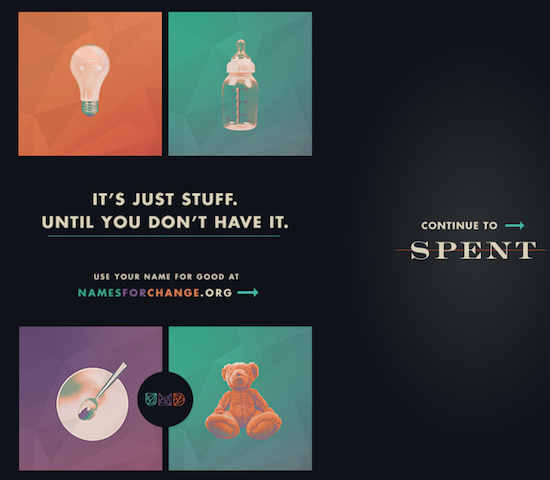



Follow Me